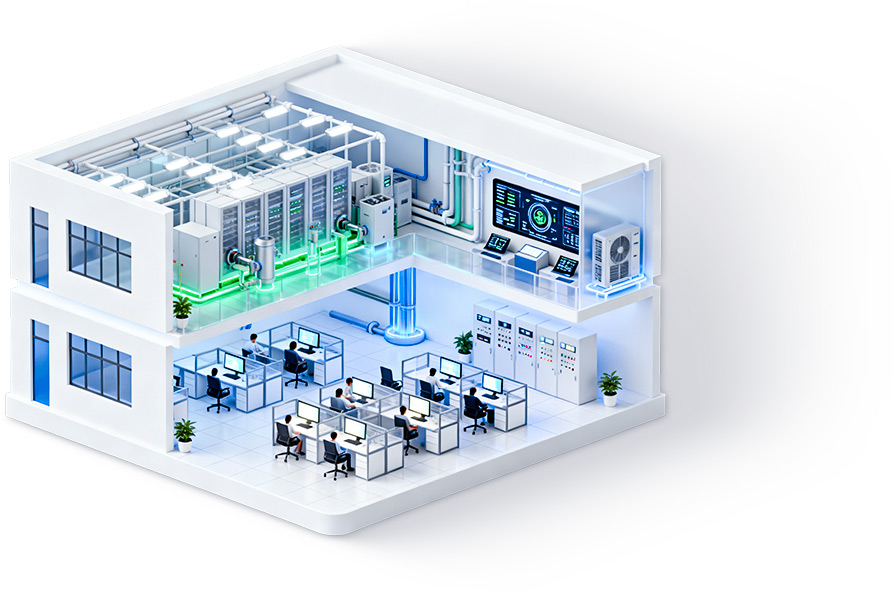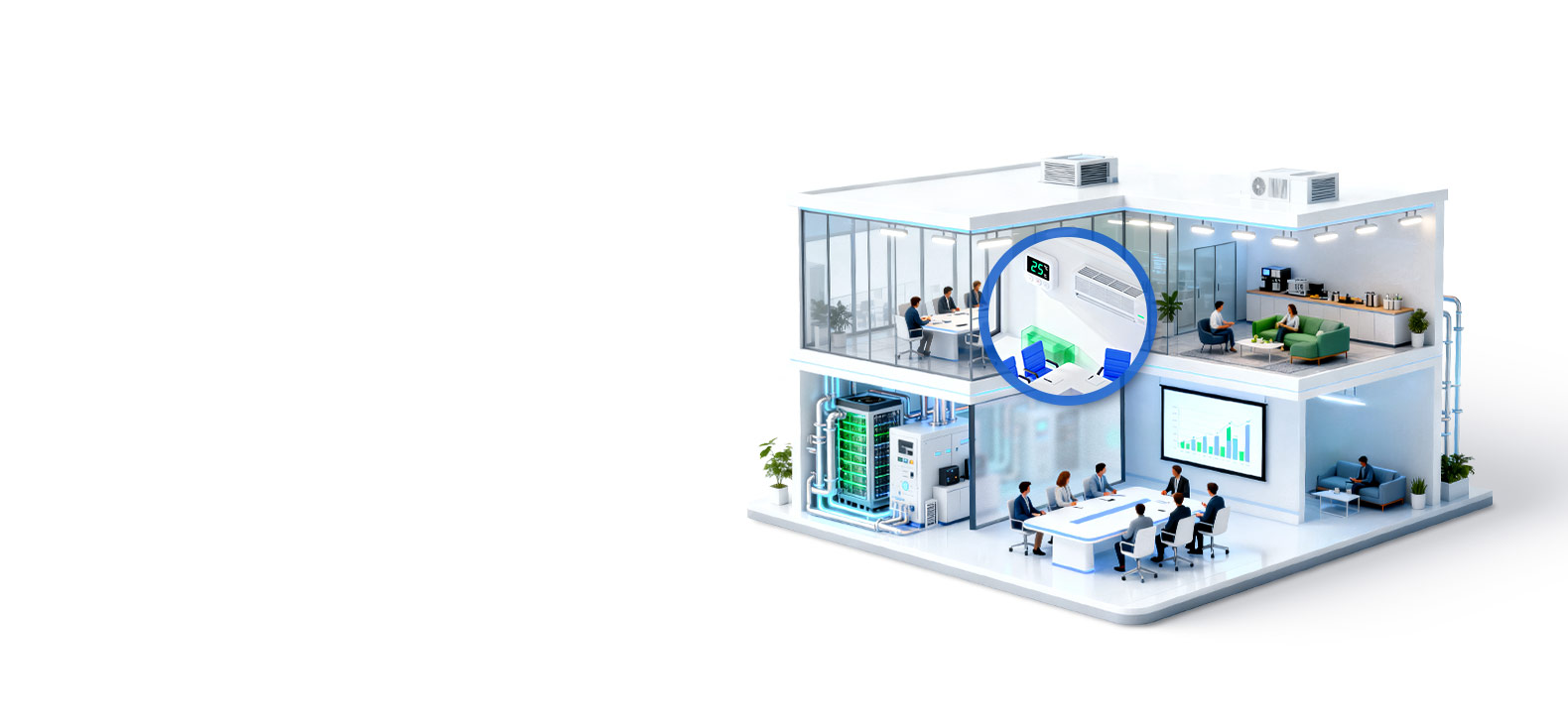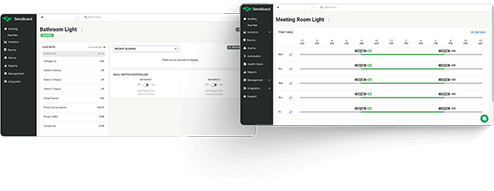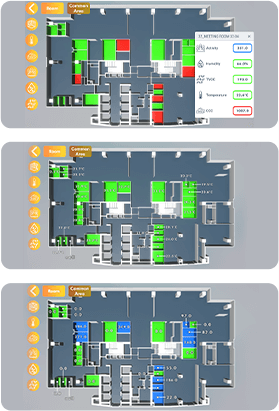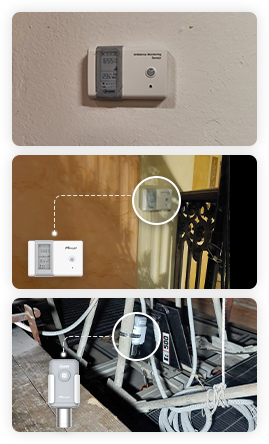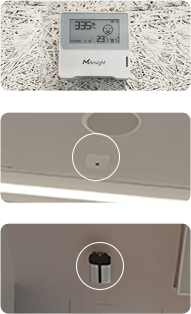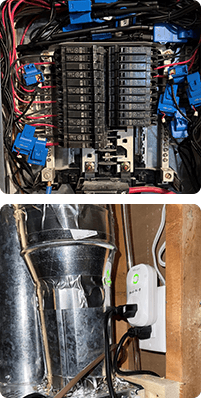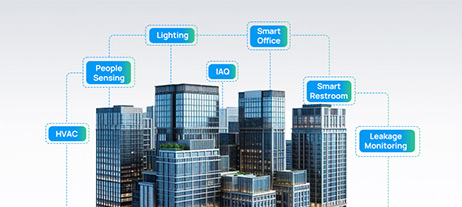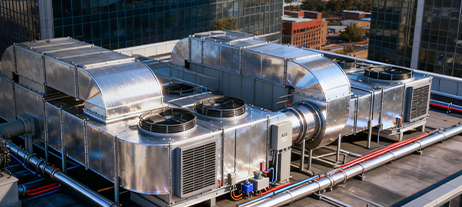

HVAC Management


Smart Lighting Control


Energy Monitoring & Management
Heating, ventilation, and air conditioning are the largest sources of energy consumption in most buildings — but also the biggest opportunities for savings. Milesight's intelligent HVAC solutions integrate seamlessly with terminal units such as fan coil units (FCUs), PTAC units and heat pumps, combining real-time sensing, automated control, and data-driven optimization to deliver maximum comfort with minimal energy use.
Local Automation Adjustment
Peak Load Management
The solution dynamically adjusts or shifts HVAC operations according to external grid pressure to avoid peak-time electricity charges. This prevents sudden energy spikes and lowers expensive demand costs.
Intelligent Temperature Range Control
HVAC temperature settings are intelligently constrained within predefined limits based on user inputs from the platform, ensuring efficient climate control and eliminating unnecessary energy consumption.
Occupancy & Schedule-Based Setback
Temperature setbacks are automatically implemented according to real-time occupancy status or scheduled time periods, reducing HVAC operation during unoccupied hours and significantly cutting overall energy use.
Adaptive Demand Response
The solution continuously optimizes HVAC performance based on the real-time power demand of connected building equipment, improving load balancing, reducing waste, and enhancing overall operational efficiency.
Real-Time Local Interaction
Occupancy-Based Temperature Control
WT Series Thermostats adjusts its target temperature automatically based on occupancy data collected by occupancy sensors. This ensures the HVAC system runs only when spaces are in use, reducing unnecessary energy consumption.
Ventilation Optimization
WT Series Thermostats work with people counting sensors to dynamically modulate fan.
Control Based on Window & Door Status
WT Series Thermostats works with WS301 Door/window Sensors to adjust HVAC power based on real-time opening and closing status, improving cooling and heating efficiency. It also analyzes how users' door and window operation habits correlate with their temperature control preferences to enable smarter climate strategies.
Environment-Aware Climate Adjustment
WT Series Thermostats integrate with AM Series Sensos or EM300-TH Temperature and Humidity Sensors to synchronize HVAC and heating valve operations — including on/off control and flow regulation — based on real-time indoor and outdoor temperature and humidity data. This enables precise climate management and significantly improves overall energy efficiency.
Power Consumption Monitoring
CT Series Smart Current Transfers monitor the power consumption of major HVAC equipment such as chillers, heat pumps, and compressors. This allows operators to identify usage patterns and optimize system performance through intelligent control with WT Series Thermostats.
Fuel Level & Leakage Detection
Level Sensors continuously track HVAC fuel levels and EM300-ZLD Leak Sensor detects potential leaks — including oil or non-conductive substances — to ensure stable operation. Proactive detection supports predictive maintenance and prevents unnecessary energy loss.
HVAC Energy Efficiency Calculation
Conduct high-frequency temperature monitoring at the air outlet to calculate the system's energy efficiency. The heat transfer process requires step-by-step examination, starting with water temperature, followed by pipe temperature, and ultimately the air outlet temperature, to determine energy efficiency.
Smart lighting systems use occupancy data and intelligent dimming to reduce energy consumption while maintaining a comfortable and productive indoor environment.
Comprehensive power monitoring and intelligent control enable buildings to visualize energy use, automate device operation, and develop targeted energy-saving strategies.
Real-Time Local Interaction
Real-Time Device Control
WS202 can detect occupancy and ambient light levels to intelligently trigger WS50x Smart Wall Switches and WS52x Smart Sockets, automatically controlling displays, meeting room equipment, or other electrical devices. These devices can communicate directly via D2D without a gateway, or be centrally managed through a shared gateway using LoRaWAN®, enabling flexible, efficient, and automated power control.

Power Consumption Monitoring for Facilities
Facility-level subsystems and major electrical equipment are continuously monitored through Milesight Smart Current Transformers, which provide detailed consumption data and analytical reports. These insights help operators identify inefficiencies, optimize load distribution, and make informed decisions to improve overall energy performance.
Residential Energy Monitoring
In residential settings, Smart Current Transformers measure total energy consumption, track solar panel output, and monitor electricity usage of water-source heat pumps. The data enables precise residential energy analysis and provides a complete picture of energy flow.
Household Electricity Management
Designed for end-user visibility, the CT101 Smart Current Transformer compares measured household energy consumption with actual billing data. It enhances transparency, builds trust in energy metering, and helps residents identify and address inefficiencies in their daily energy use.
